
Animal Nutrition and Physiology, Instrumental Aroma Analysis
The smell of fermented forages characterizes their quality well, due to which characteristic the organoleptic evaluation is part of the routine quality inspection. Instrumental aroma testing techniques provide the opportunity to perform an analysis similar to human sensory evaluations automatically, always with the same conditions, objectively, even with a very large number of samples. In the framework of the research carried out with the colleagues of Hungarian University of Agriculture and Life Sciences and ÁT Kft., we developed a methodology with which we can characterize the quality of alfalfa and rye silages and haylages based on electronic nose data. We published our results in the Hungarian Journal of Animal Production.
Description of the odor profile of fermented alfalfa and rye silages using an electronic nose
Haruna Gado Yakubu, George Bazar, Éva Radó-Nyiczky, Szilvia Orosz, Tamás Tóth
Silages, as conserved forages, form a basic component of ruminant diets. The odor of silage is highly informative and helps in determining the quality. Electronic nose (e-nose) technology provides rapid and objective measurement of odors and may be applicable for quick screening of various silages. Aroma profile analysis of alfalfa and rye silages (n = 22 and 38, respectively) collected from Hungarian dairy farms, produced with different harvest technologies, and covering a wide range of quality, was performed with an e-nose utilizing the metal oxide semiconductor sensor array technology. The odor patterns of the quality categories based on the pH and the lactic acid/acetic acid ratio were compared. The applied e-nose was not suitable for distinguishing between samples made from different plant materials with average compositional parameters, because the effect of species on the odor was less characteristic than that of the diverse processing conditions. However, on the basis of the aroma profiles described by the measured sensor signals, alfalfa-based forages prepared with different processing (direct-cut vs. wilted) could be accurately identified, and rye samples were identifiable according to the different phenological phases at harvest (before heading vs. heading). In the supervised classification (discriminant analysis) of groups of samples based on pH and lactic acid/acetic acid ratio, 65-75% of the samples selected for validation were correctly identified, which indicates reliability of the method. Based on the results, the presented instrumental aroma testing methodology proved to be promising in the field of quality testing of fermented forages.
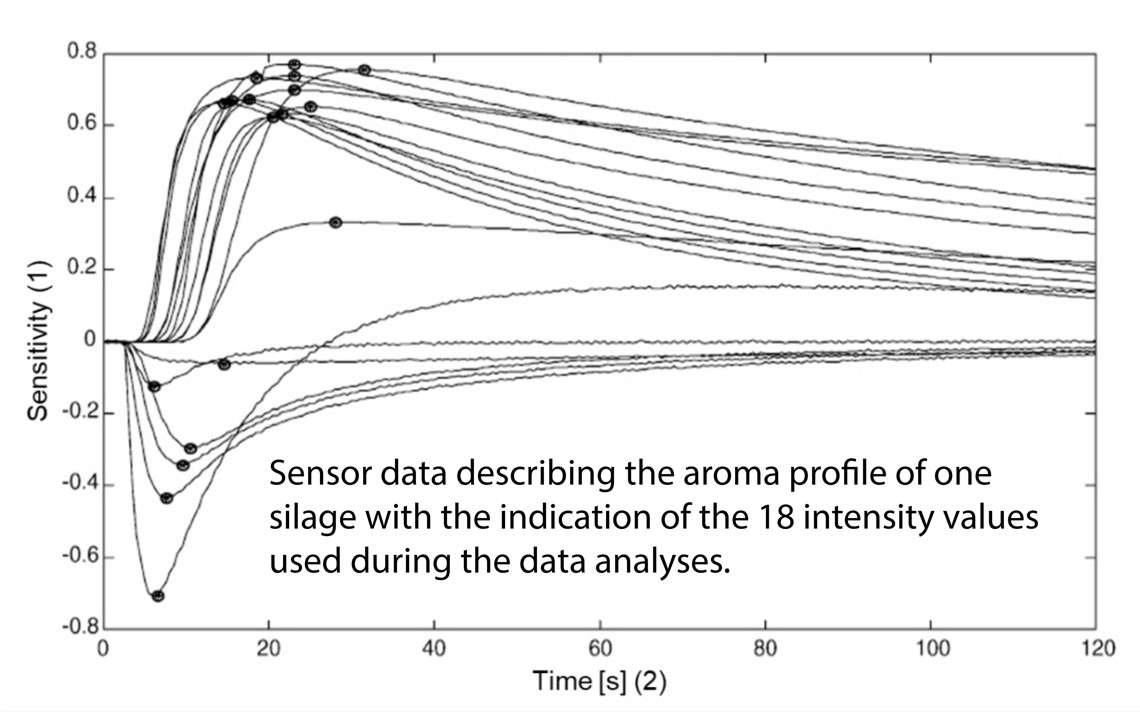
Access the full paper free of charge here:
» Description of the odor profile of fermented alfalfa and rye silages using an electronic nose
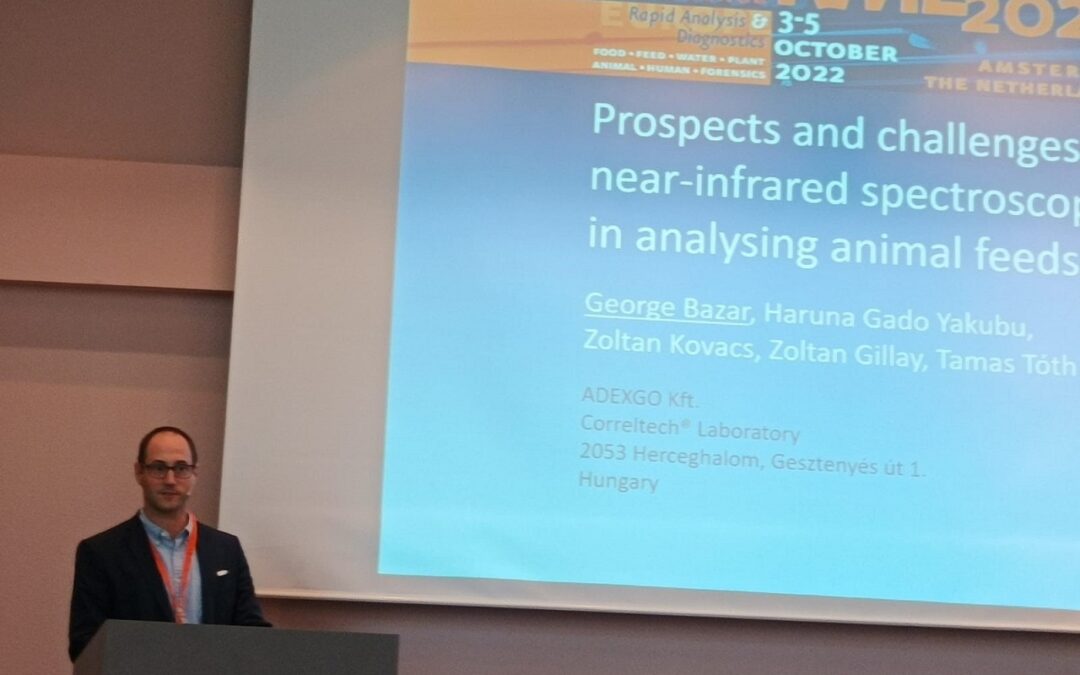
Events
ADEXGO’s colleagues presented the latest research results of the Correltech Laboratory at the Rapid Methods Europe international conference held in Amsterdam in the first days of October. Our results obtained during the examination of the effect of feeding on the smell of milk with an electronic nose were presented in a poster and in a short presentation, while head of research Dr. George Bázár, as an invited speaker of the conference, summarized the challenges experienced in the field of near-infrared spectroscopy when applied in feed analyses.
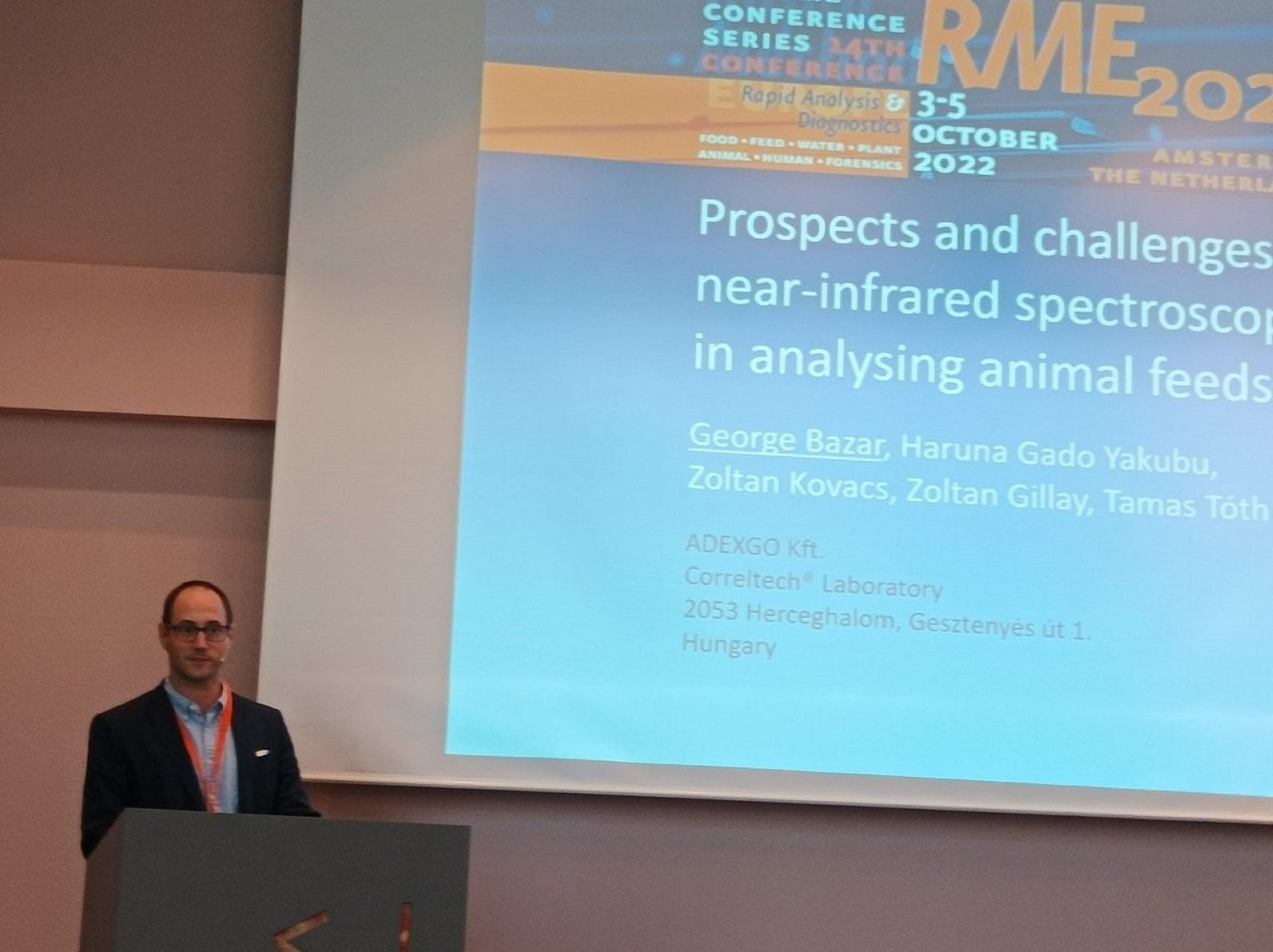
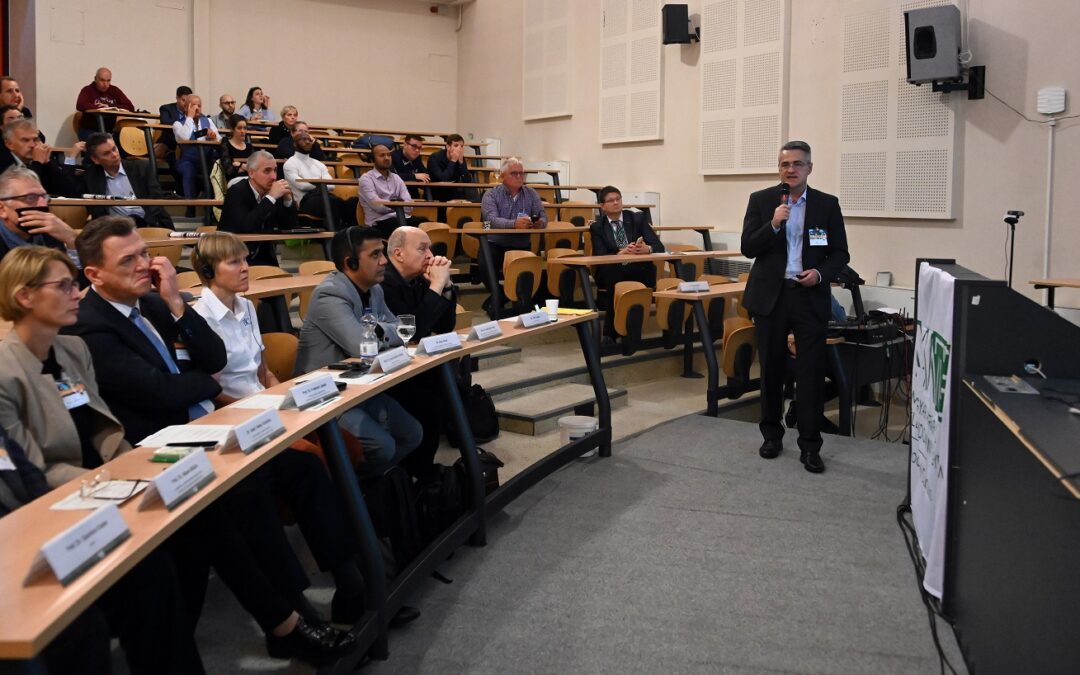
Events
The 20th International Symposium on Animal Nutrition was held at the end of September as part of the series of conferences leading up to the Kaposvár Animal Husbandry Days.
This time again, the organizers invited domestic and foreign speakers being specialists of the nutrition of the most important farm animals. In his presentation, the managing director of ADEXGO Kft., Dr. Tamás Tóth gave an overview of the new aspects of ruminant nutrition, especially that of dairy cows, and summarized the benefits of some innovative feed testing solutions.
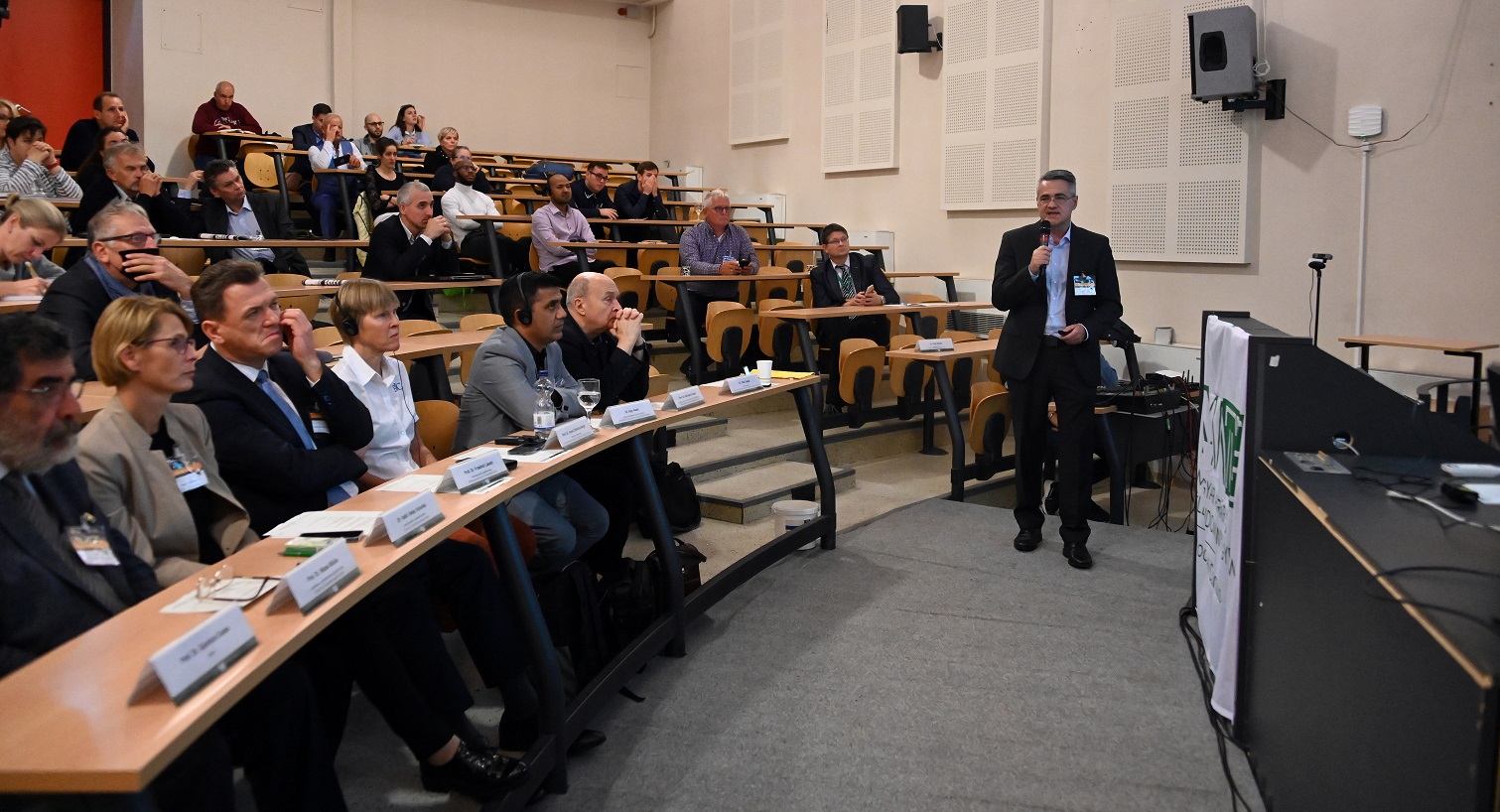

Events
At the invitation of GEO-MILK Kft. and Neumann János University, we participated in the public opening of the project GINOP_PLUSZ-2.1.1-21-2022-00144 entitled “Development of near-infrared spectroscopic instruments, methods and models suitable for on-site measurement of ensiled feed” at the NJE GAMF in Kecskemét on 25th August. In addition to the two members of the consortium, the subcontractors participating in the professional implementation of the project, including ADEXGO Kft., presented themselves. During the execution of the project, our company provides professional support in the technical application of near-infrared spectroscopy solutions and in the development of chemometric data analyses.
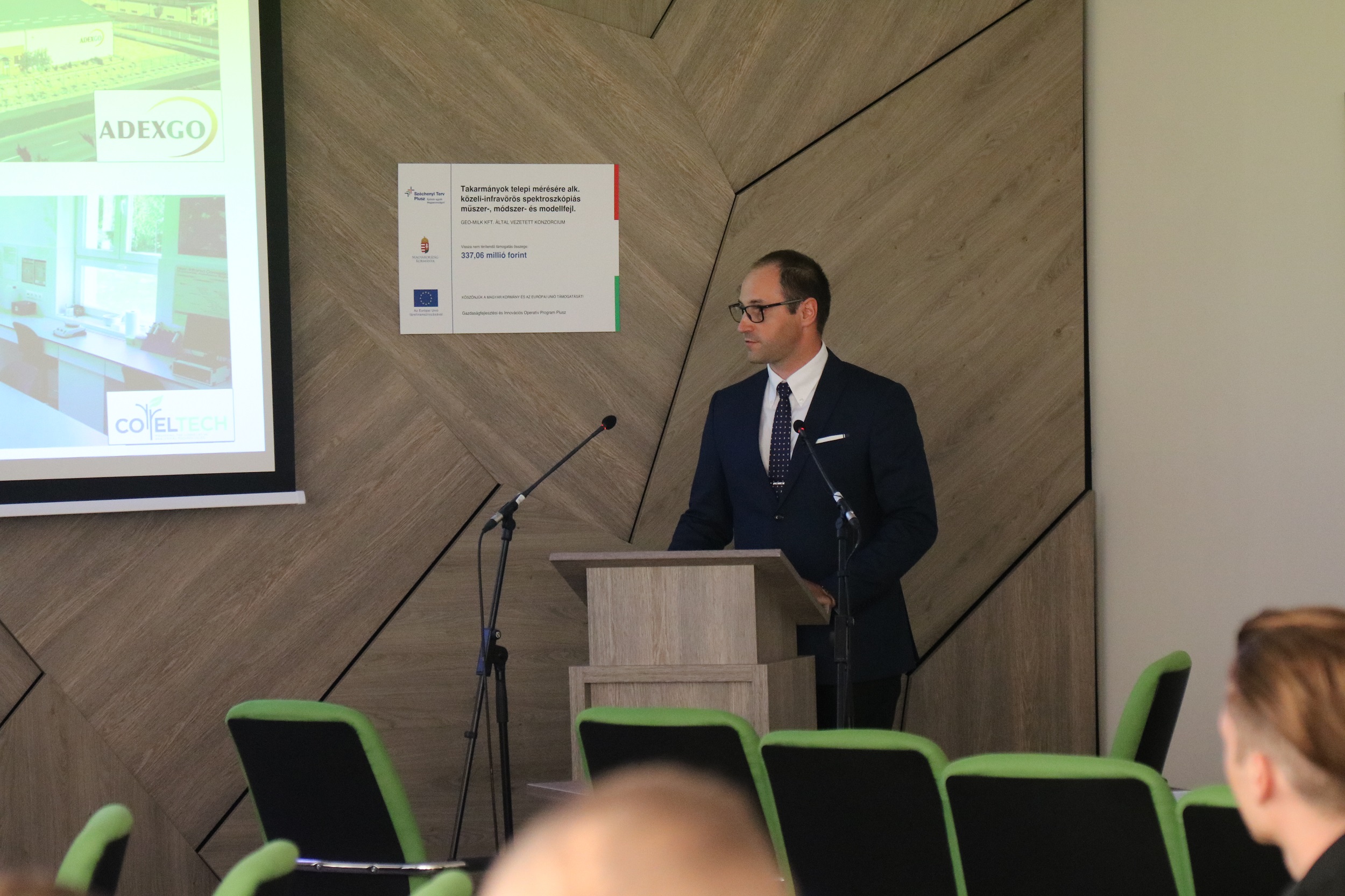
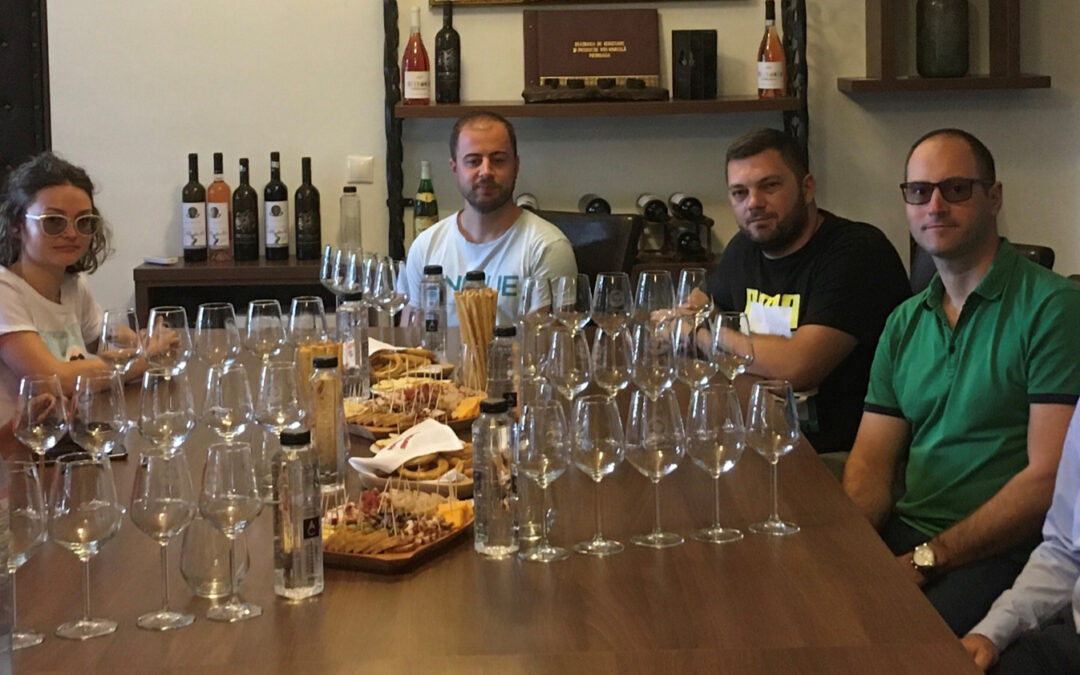
Events
Within the framework of the three-year EUREKA project launched in 2021, our company is making innovations in the field of wine quality testing, primarily based on the testing methodologies of the Correltech Laboratory. To conclude the professional tasks of the first milestone, we met the Romanian consortium partners in Bucharest, where we also agreed on detailed plans for the research to be carried out in the future. The objective examination of the quality of the wines, the early detection of wine defects and wine diseases, and the description of the aroma profile characteristic of the area will continue in the next two years in cooperation between ADEXGO Kft. and the Pietroasa Wine Research Institute, the Bucharest University of Agriculture and Veterinary Medicine, and Széchenyi István University.
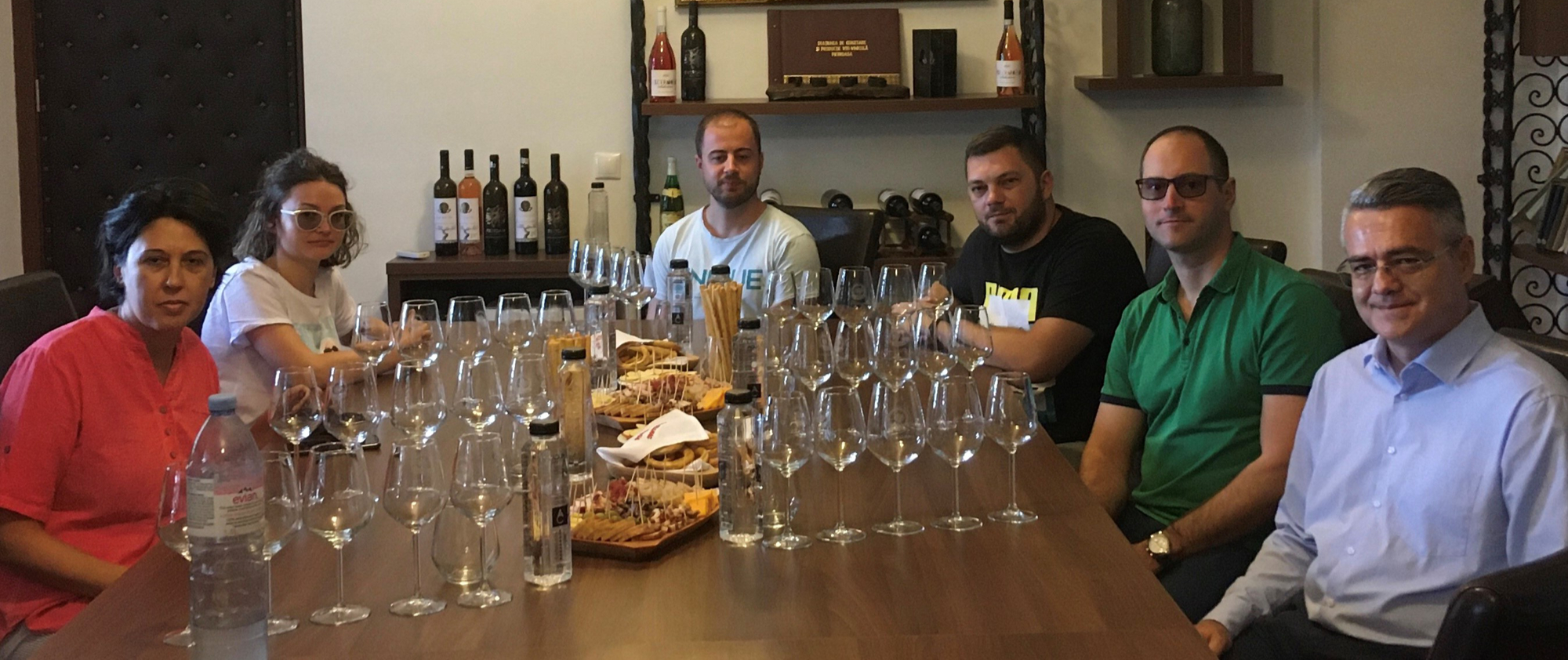

News
In 2020, ADEXGO Kft. accompanied with JEFO started to develop a supplementary feed for dairy calves. The results of the trial were published on the annual meeting of the American Dairy Science Association on June 19-22, 2022 in Kansas City as a poster presentation.
Development was based on the rumen protected vitamin B complex of JEFO constructed for beef calves to reduce the negative effects of post-weaning transportation stress. The new supplementary feed containing B vitamins (UP-2-WEAN-GO) promotes the development of dairy heifers before and after weaning. The product was tested at a central Hungarian dairy farm at the end of 2020.
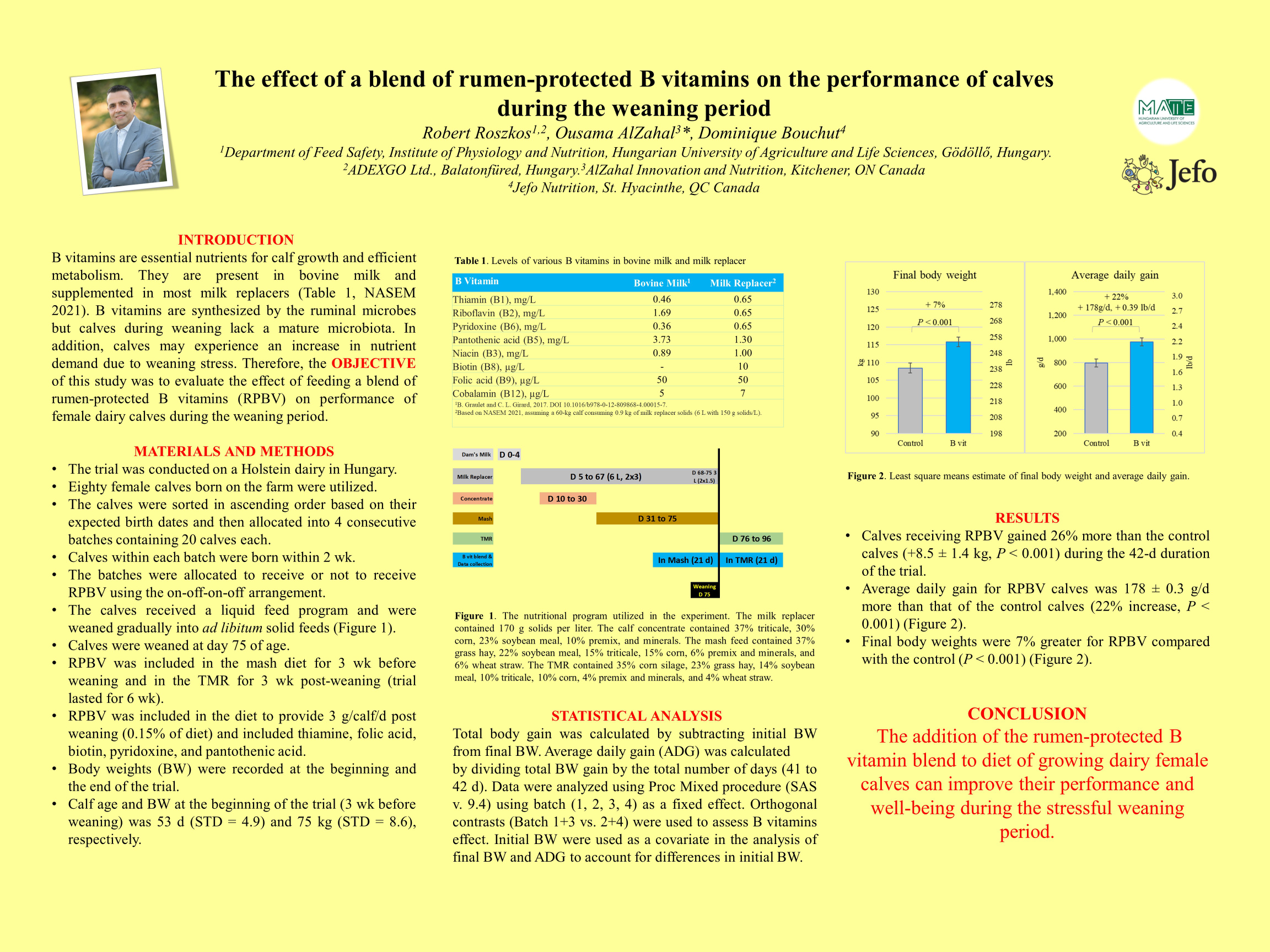

Events
FoodConf, the International Conference on Food Science and Technology, was held for the fourth time. Our colleagues presented two posters at the conference and presented the effect of special feeding of ruminants on the aroma profile of dairy products, as well as the applicability of instrumental aroma analysis in coffee quality testing.
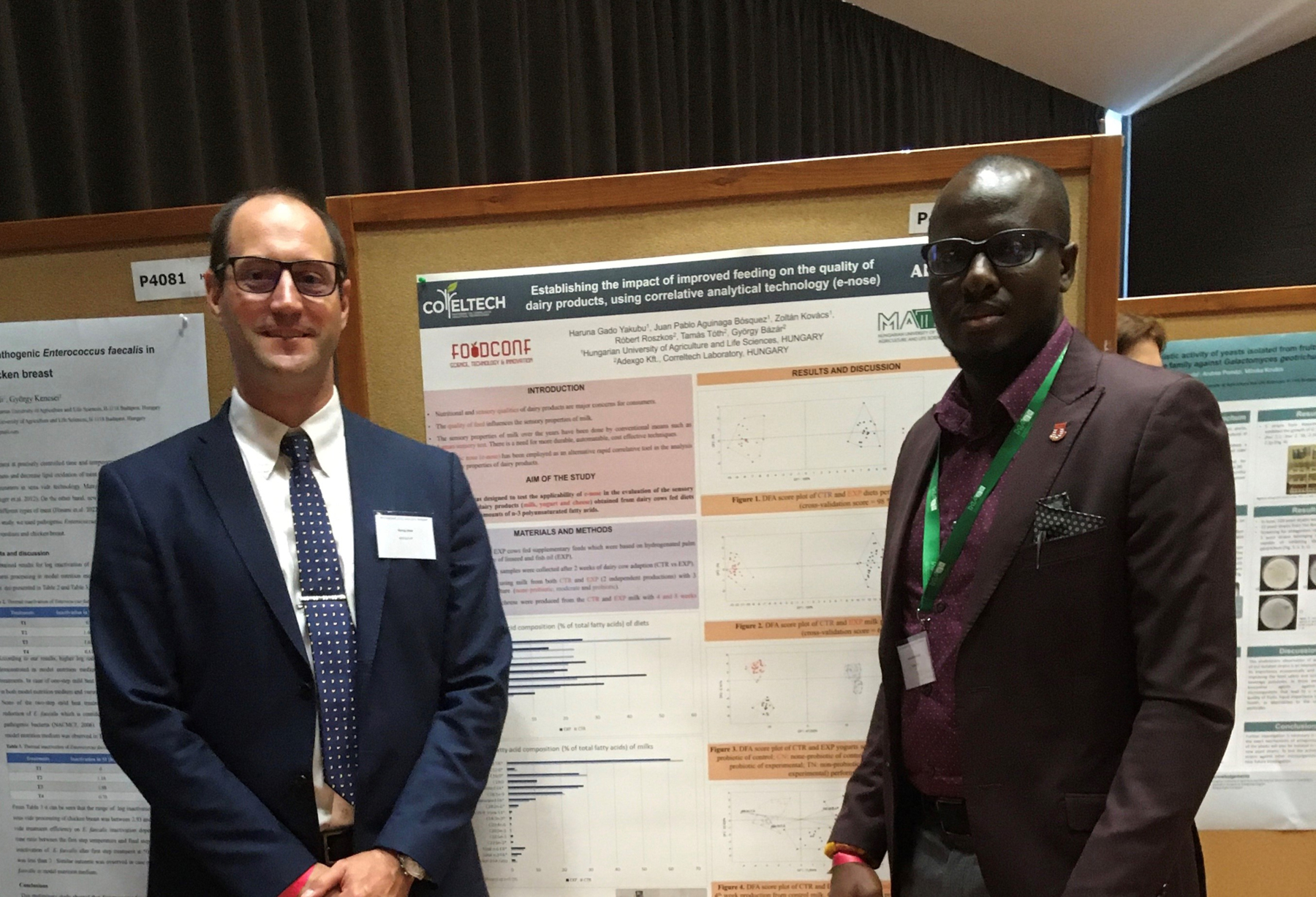
Events
The annual partner meeting of VITAFORT Zrt. is always closely followed by the professionals. The company welcomes and entertains its business associates and professional partners with high-quality lectures, professional programs and delicious food and drinks. At the partner meeting organized on 2nd June this year, we participated as a prominent exhibitor in the context of our long-lasting commercial and research collaborations with VITAFORT Zrt., and in addition to our innovative products we presented the services of our Correltech Laboratory. In the section dealing with ruminants’ nutrition, Dr. Tamás Tóth, managing director of ADEXGO Kft., gave a presentation in which he focused on the importance of research in the field of feed testing, focusing on the analytical and practical challenges of NIRS technology and instrumental aroma analysis.
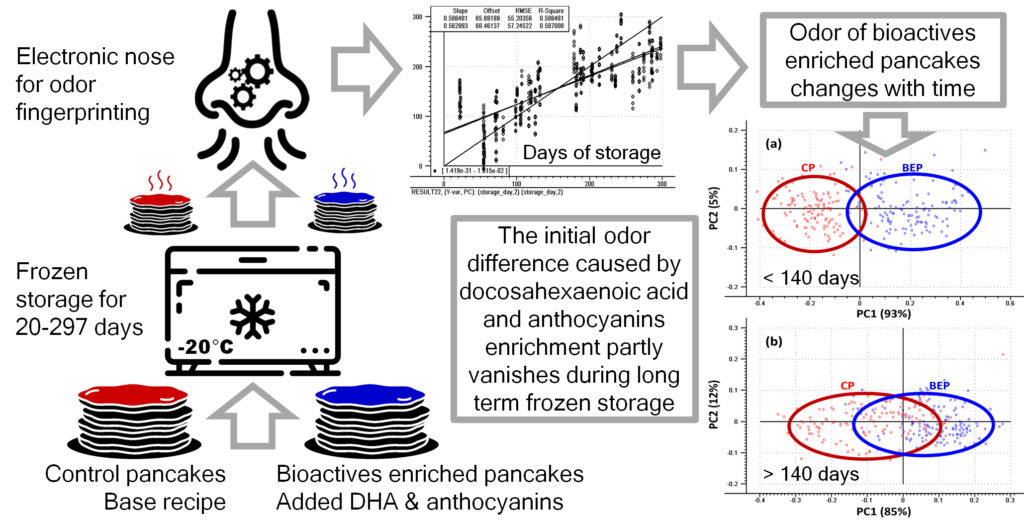
News
As a member of an EU FP7 tender consortium, ADEXGO Kft. participated in the development and comprehensive analytical, economic and nutritional physiological examination of bioactive enriched functional foods with health-promoting effect. The results of the aroma analysis of the food produced in the project were summarized in a paper published in the peer-reviewed scientific journal Food Analytical Methods.
Machine olfaction to evaluate the stability of the odor profile of pancakes enriched with docosahexaenoic acid and anthocyanins
George Bazar, Hajnalka Hingyi, Éva Csavajda, Csaba Palkó, Haruna Gado Yakubu, Carlos Pineda-Vadillo, Didier Dupont, Francesco Capozzi, Alessandra Bordoni, Tamás Tóth
Increasing consumer awareness on good health has drawn the attention to health promoting natural dietary substances. However, since the organoleptic profile of foods highly influences the consumers’ preference, and it is often decisive in the purchase, it is important to objectively describe and evaluate the effect of the applied bioactive ingredients on aroma. In this study, pancakes enriched with docosahexaenoic acid and anthocyanins were tested with electronic sensor array technology against control products. Samples were analyzed with an Alpha MOS FOX4000 electronic nose (EN) after 20 to 297 days of frozen storage at -20°C. Multivariate analysis of the acquired EN data showed a strong relation between the number of days that samples were stored and the odor describing sensor signals of enriched samples (R2 = 0.59), but the observed relation was broken in the case of control (not enriched) samples (R2 = 0.08). When a supervised classification of enriched and control samples was done, the ratio of correctly identified samples in cross-validation was 95.1% at short-term storage (< 140 days), while the hit rate dropped to 80.4% at prolonged storage (> 140 days). This signified the existing but less intensive odor differences. The electronic nose technology was proven to be applicable in the characterization of one type of bioactive-enriched foods, while it was also useful in the monitoring of odor alterations during storage.

Purchase the full paper on the website of the journal or contact us and request a copy from the authors:
» Machine olfaction to evaluate the stability of the odor profile of pancakes enriched with docosahexaenoic acid and anthocyanins

Instrumental Aroma Analysis
As a member of an EU FP7 tender consortium, ADEXGO Kft. participated in the development and comprehensive analytical, economic and nutritional physiological examination of bioactive enriched functional foods with health-promoting effect. The results of the aroma analysis of the food produced in the project were summarized in a paper published in the peer-reviewed scientific journal Food Analytical Methods.
Machine olfaction to evaluate the stability of the odor profile of pancakes enriched with docosahexaenoic acid and anthocyanins
George Bazar, Hajnalka Hingyi, Éva Csavajda, Csaba Palkó, Haruna Gado Yakubu, Carlos Pineda-Vadillo, Didier Dupont, Francesco Capozzi, Alessandra Bordoni, Tamás Tóth
Increasing consumer awareness on good health has drawn the attention to health promoting natural dietary substances. However, since the organoleptic profile of foods highly influences the consumers’ preference, and it is often decisive in the purchase, it is important to objectively describe and evaluate the effect of the applied bioactive ingredients on aroma. In this study, pancakes enriched with docosahexaenoic acid and anthocyanins were tested with electronic sensor array technology against control products. Samples were analyzed with an Alpha MOS FOX4000 electronic nose (EN) after 20 to 297 days of frozen storage at -20°C. Multivariate analysis of the acquired EN data showed a strong relation between the number of days that samples were stored and the odor describing sensor signals of enriched samples (R² = 0.59), but the observed relation was broken in the case of control (not enriched) samples (R² = 0.08). When a supervised classification of enriched and control samples was done, the ratio of correctly identified samples in cross-validation was 95.1% at short-term storage (< 140 days), while the hit rate dropped to 80.4% at prolonged storage (> 140 days). This signified the existing but less intensive odor differences. The electronic nose technology was proven to be applicable in the characterization of one type of bioactive-enriched foods, while it was also useful in the monitoring of odor alterations during storage.

Purchase the full paper on the website of the journal or contact us and request a copy from the authors:
» Machine olfaction to evaluate the stability of the odor profile of pancakes enriched with docosahexaenoic acid and anthocyanins















